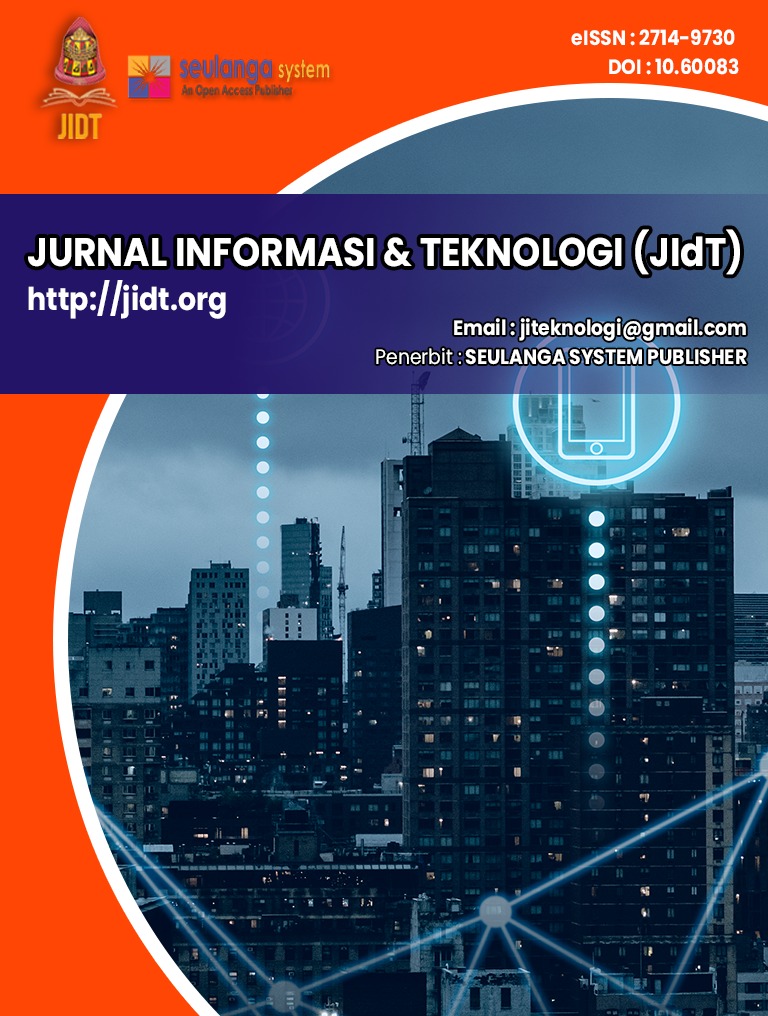The Influence of Digital Promotion Strategies on Consumer Purchase Intentions for Culinary Products at Kampoeng Lauk Palangka Raya
Main Article Content
Abstract
The increasing reliance on digital media has transformed how consumers search for information, evaluate products, and make purchase decisions, especially in the food and beverage industry. Local culinary businesses must now adapt to a digital environment where effective promotional strategies can determine their competitiveness and sustainability. In response to this shift, this study examines the effectiveness of digital promotion strategies in influencing consumer purchase intention, with Kampoeng Lauk Palangka Raya serving as the case study. A quantitative approach was employed by distributing structured questionnaires to consumers exposed to Kampoeng Lauk's digital marketing efforts through social media and online platforms. Multiple linear regression analysis assessed the influence of various digital strategies, including social media content, endorsements, and paid advertisements, on consumer behavior. The results indicate that digital promotion strategies have a statistically significant impact on purchase intention. Among the variables, informative and engaging social media content was the most influential factor in motivating consumers to consider purchasing. These findings emphasize the importance of using digital tools strategically to build customer interest and brand loyalty. The study recommends that small and medium-sized culinary enterprises (SMEs) develop creative, audience-tailored content and utilize digital analytics to refine their marketing efforts. Ultimately, this research contributes to the growing discourse on digital marketing in the local business context and provides actionable insights for culinary entrepreneurs aiming to compete in a dynamic digital marketplace.
Article Details

This work is licensed under a Creative Commons Attribution 4.0 International License.
References
[1] T. L. Tuten and M. R. Solomon, Social Media Marketing, 3rd ed. SAGE Publications, 2018.
[2] P. Kotler and K. L. Keller, Marketing Management, 15th ed. Pearson, 2016.
[3] T. Wijaya and R. N. Pertiwi, "The effect of social media advertising on purchase intention: Evidence from Indonesia," J. Manag. Mark. Rev., vol. 5, no. 2, pp. 103–113, 2020, doi: 10.35609/jmmr.2020.5.2(2).
[4] Hootsuite & We Are Social, "Digital 2023: Indonesia," 2023. [Online]. Available: https://datareportal.com/reports/digital-2023-indonesia
[5] D. Chaffey and F. Ellis-Chadwick, Digital Marketing, 7th ed. Pearson Education Limited, 2019.
[6] R. A. Kusuma and A. Wulandari, "Pengaruh Digital Marketing terhadap Peningkatan Penjualan pada UMKM Kuliner," J. Riset Manaj. dan Bisnis, vol. 6, no. 1, pp. 35–42, 2021, doi: 10.36226/jrmb.v6i1.371.
[7] Y. K. Dwivedi et al., "Setting the future of digital and social media marketing research: Perspectives and research propositions," Int. J. Inf. Manag., vol. 59, p. 102168, 2021, doi: 10.1016/j.ijinfomgt.2020.102168.
[8] Y. Bilgin, "The effect of social media marketing activities on brand awareness, brand image and brand loyalty," Bus. Manag. Stud. An Int. J., vol. 6, no. 1, pp. 128–148, 2018, doi: 10.15295/bmij.v6i1.229.
[9] Deloitte, "Digital Consumer Trends in Southeast Asia," 2022. [Online]. Available: https://www2.deloitte.com
[10] M. Fishbein and I. Ajzen, Predicting and changing behavior: The reasoned action approach. Psychology Press, 2010.
[11] W. M. Lim, S. Kumar, and F. Ali, "Are online product reviews always beneficial? A dual-process theory perspective," J. Bus. Res., vol. 141, pp. 339–351, 2022, doi: 10.1016/j.jbusres.2021.11.034.
[12] J. W. Creswell, Penelitian kualitatif & desain riset: Memilih di antara lima pendekatan (Ahmad Lintang Lazuardi, Trans.). Pustaka Pelajar, 2018. (Original work published 2013)
[13] Sugiyono, Metode penelitian kuantitatif, kualitatif, dan R&D. Alfabeta, 2020.
[14] I. Ghozali, Aplikasi analisis multivariate dengan program IBM SPSS 25. Badan Penerbit Universitas Diponegoro, 2018.
[15] I. Ajzen, "The theory of planned behavior," Organ. Behav. Hum. Decis. Process., vol. 50, no. 2, pp. 179–211, 1991, doi: 10.1016/0749-5978(91)90020-T.
[16] Y. Dong, Y. Huang, P. Hu, P. Zhang, and Y. Wang, "The effect of picture attributes of online ordering pages on visual attention and user experience," Int. J. Ind. Ergon., vol. 96, p. 103477, 2023, doi: 10.1016/j.ergon.2023.103477.
[17] U. Narang and V. Shankar, "Mobile app introduction and online and offline purchases and product returns," Mark. Sci., vol. 38, Article 1169, 2019, doi: 10.1287/mksc.2019.1169.
[18] I. Bernarto, M. Berlianto, Y. Meilani, R. Masman, and I. Suryawan, "The influence of brand awareness, brand image, and brand trust on brand loyalty," J. Manaj., vol. 24, no. 3, pp. 412–426, 2020, doi: 10.24912/jm.v24i3.676.
[19] A. Weiss, N. Lurie, and D. MacInnis, "Determinants of the perceived value of information in information search contexts," SSRN Electron. J., 2006, doi: 10.2139/ssrn.912512.
[20] E. Sung, W. Chung, and D. Lee, "Factors that affect consumer trust in product quality: A focus on online reviews and shopping platforms," Humanit. Soc. Sci. Commun., vol. 10, Article 2277, 2023, doi: 10.1057/s41599-023-02277-7.
[21] N. R. Chowdhury, "Problems and prospects of online food delivery services: A study on Sylhet City," 2021, doi: 10.13140/RG.2.2.26520.72967.
[22] J. A. Chevalier, Y. Dover, and D. Mayzlin, "Channels of impact: User reviews when quality is dynamic and managers respond," Mark. Sci., vol. 37, pp. 688–709, 2018, doi: 10.1287/mksc.2018.1090.
[23] C. Gunawan, L. Rahmania, and I. Hendrika, "The influence of social influence and peer influence on intention to purchase in e-commerce," Rev. Manag. Entrep., vol. 7, no. 1, pp. 61–84, 2023, doi: 10.37715/rme.v7i1.3683.
[24] H. Tajfel and J. C. Turner, "The social identity theory of intergroup behavior," in Psychology of intergroup relations, 2nd ed., S. Worchel and W. G. Austin, Eds., Nelson-Hall, 1985, pp. 7–24.
[25] R. Filieri, Z. Lin, G. Pino, S. Alguezaui, and A. Inversini, "The role of visual cues in eWOM on consumers' behavioral intention and decisions," J. Bus. Res., vol. 135, pp. 663–675, 2021, doi: 10.1016/j.jbusres.2021.06.055.
